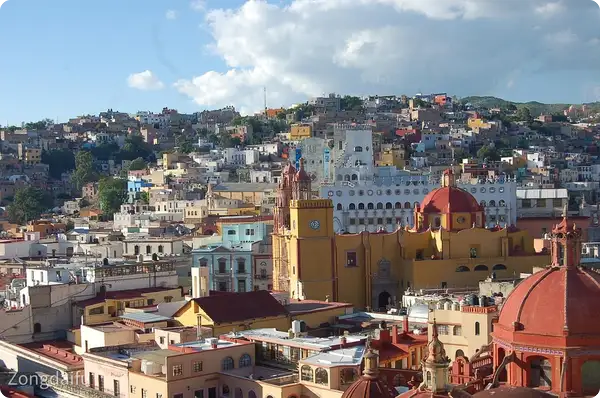In recent years, Chinese engines have shown strong growth momentum in the Mexican market. The demand for Mexican engine market continues to grow, mainly driven by its industrial expansion, agricultural modernization and upgrading of the automotive industry chain. In 2023, Mexicos GDP will grow by 3.2%, industrial production will grow by 3.5%, and the construction industry will grow by 15.6%, directly driving the demand for high-efficiency and energy-saving engines in the fields of construction machinery, agricultural machinery and commercial vehicles.
The following is an analysis of the agency process, relevant documents, regulatory certification requirements, and how to quickly complete the customs clearance process for my countrys engine exports to Mexico:

Export agentThe flow
- Choose a foreign trade agent: suitable for large-volume orders, which require entrusting a professional machinery and equipment exporter;
- Signing a contract: clarify FOB/CIF terms and agree on quality inspection standards (such as ISO 8528, etc.);
- Production and stocking: Complete material testing and packaging according to Mexican standards;
- Logistics options: Sea freight - Shanghai/Ningbo to Manzanillo Port (25-30 days), full container freight is about $4000/40HQ; Air freight - optional for urgent orders, the freight is 5-8 times that of sea freight.
- Customs clearance and delivery: Mexican customs pre-declaration + local logistics delivery.
Document List
1. Basic files
- Commercial invoice (specify engine model, power, and emission standards);
- Packing list (split by components, marked with weight and size);
- Bill of lading (the consignee needs to provide Mexican tax number RFC).
2. Compliance Documents
- Certificate of Origin (CO) (issued by CCPIT or customs);
- Power of attorney (POA) (certified by Hague);
- Test report (such as emission test report Euro V/China V standard).
3. Attach files
- If technology transfer is involved, a patent certificate or technology agreement must be provided;
- After-sales service commitment letter (specifying the maintenance response time and spare parts supply plan).
4. Special files
- Import license: Some engines require a license from the Mexican Ministry of Economy (SE);
- Dangerous Goods Transportation Certificate: Required for engines including fuel systems.

Regulatory and certification requirements
1. Compulsory certification
NOM certification:
- NOM-001-SCFI: Electrical safety;
- NOM-042-SEMARNAT: Emission standards (equivalent to EPA Tier 4);
- NOM-016-ENER: Energy efficiency label.
Certification process:Submit technical documents → prototype test → factory audit → obtain certification (cycle 3-6 months).
2. Voluntary certification
- ISO 9001:Quality management system certification to enhance customer trust;
- ISO 14001: Environmental management system certification, in compliance with Mexican environmental regulations.
3. Localization requirements
- Spanish Label: The operation manual and safety warnings must be provided in Spanish;
- After-sales service: It is necessary to set up a maintenance point in Mexico or entrust a local service provider.

Packaging and labeling requirements
1. Packaging specifications
- Shockproof and waterproof: The wooden box is lined with EPE foam and wrapped with waterproof film on the outside;
- Environmentally friendly materials: Give priority to the use of FSC certified wood;
- Standard specifications:Single box weight ≤ 30kg (in compliance with Mexican manual handling standards).
2. Logo content
Mandatory labeling:
- Country of origin mark (“Made in China”);
- Technical parameters (power, voltage, emission level);
- Safety warnings (such as High voltage danger and Installation by qualified personnel only).
Certification Mark: NOM, ISO and other certification labels must be clearly visible.
Fast clearance strategy
1. Advance pre-screening and electronic filing
Upload electronic documents through the Mexican Customs SIA system to ensure that the HS code and CO number are consistent with the actual goods. It is recommended to entrust an agent to conduct pre-manifest declaration to avoid detention due to inconsistent information.
2. Logistics route optimization
- The Maritime: From Shanghai/Ningbo to Manzanillo Port (25-30 days), the full container freight is about $4500/40HQ;
- Railway transport: Shorten inland transportation time and reduce logistics costs through the Central American corridor.
3. Localized service layout
- Set up a bonded warehouse in Mexico to stock commonly used spare parts and shorten after-sales response time;
- Cooperate with local maintenance networks to provide 24-hour technical support and enhance customer stickiness.
4. Risk Warning
- Mexico plans to implement new emission regulations in 2024, requiring engines to meet Euro VI standards;
- The risk of the United States imposing additional tariffs on Mexico needs to be closely monitored.
Conclusion
Tap Mexicos engine market with certification, customs compliance, and logistics optimization. Boost competitiveness through Chinas strategic export solutions.
Finally, if you need more support from us in export trade, please feel free to contact us!


 Follow Customer Service WeChat
Follow Customer Service WeChat